Our .17 Remington AR15 Project was one that was on our mind for the past couple of years. Finally, I was able to get some time and put everything together back in Spring of 2022, just in time for some Rockchuck and Thermal Coyote Hunts. This was my first experience with the .17 Remington, but I was not unaware of its history and steady popularity among varmint and predator hunters. Although finding an available and affordable .17 Remington bolt-action rifle is nearly impossible nowadays, building one in an AR15 was simple and straight-forward. Which makes me wonder why it is not a more popular option for those who really want to shoot the .17 Rem?
Short History of the .17 Remington:
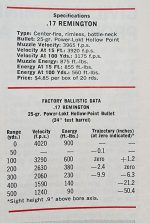 Remington Arms released the .17 Remington cartridge in 1971 and chambered it in their popular Model 700 BDL rifle. For the time, it was an amazing little cartridge. But, it faced a lot of skepticism from a mainstream industry that was not used to such a small projectile traveling at 4000+ feet per second. Within the wildcat world, .17 caliber centerfires were already tested and true, with P.O. Ackley and others creating a number of high-speed cartridges. Remington’s .17 was a slight change from the .17/223, another wildcat from the time. The difference was a longer case neck and a case shoulder, “as compared with the .223 Remington, is .087″ farther back” (Ludwig Olson – American Rifleman Magazine, July 1971 Issue). The angle of the shoulder is 23 degrees. Remington stated that the longer case neck of the new .17 Remington “has increased its accuracy substantially”. Original ammunition was loaded with the Remington 25 grain Power-Lokt HP and achieved list velocities in the 4020 fps speeds, with 900 foot pounds of energy at the muzzle, out of a 24″ test barrel. Although plagued with rumors of being hard on barrels and needing frequent cleaning, the .17 Remington became popular with the varmint / predator hunting crowds. For many who hunted predators to sell fur, it was the perfect cartridge. (See bottom of article for pictures of the original American Rifleman article from July, 1971)
Remington Arms released the .17 Remington cartridge in 1971 and chambered it in their popular Model 700 BDL rifle. For the time, it was an amazing little cartridge. But, it faced a lot of skepticism from a mainstream industry that was not used to such a small projectile traveling at 4000+ feet per second. Within the wildcat world, .17 caliber centerfires were already tested and true, with P.O. Ackley and others creating a number of high-speed cartridges. Remington’s .17 was a slight change from the .17/223, another wildcat from the time. The difference was a longer case neck and a case shoulder, “as compared with the .223 Remington, is .087″ farther back” (Ludwig Olson – American Rifleman Magazine, July 1971 Issue). The angle of the shoulder is 23 degrees. Remington stated that the longer case neck of the new .17 Remington “has increased its accuracy substantially”. Original ammunition was loaded with the Remington 25 grain Power-Lokt HP and achieved list velocities in the 4020 fps speeds, with 900 foot pounds of energy at the muzzle, out of a 24″ test barrel. Although plagued with rumors of being hard on barrels and needing frequent cleaning, the .17 Remington became popular with the varmint / predator hunting crowds. For many who hunted predators to sell fur, it was the perfect cartridge. (See bottom of article for pictures of the original American Rifleman article from July, 1971)
As cartridge advancement improved and fur prices dipped, the .17 Remington almost fell into obscurity. However, a fur price boom, a varmint hunting resurgence and Remington releasing new Model 700 rifles chambered in .17 Remington, brought the popularity of the cartridge back in the 1980s and 1990s. Since then, it has been a boom and bust cartridge for over two decades. While Remington Ammunition has gone through turmoil during the same time, other companies have stepped up to offer .17 Remington Components and ammunition for those old and new shooters. **Check out our review of the Ally Munitions .17 Remington Ammunition**
The AR15 Build:
Like most of our AR15 builds, we started with a billet Upper/Lower set from Freedom Flag Products who are based out of Nevada. The rest was put together from companies we feel make excellent products and offer consistency through-out their product lines.
- Upper/Lower Set – Freedom Flag Products
- Handguard – Odin Works O2 Lite
- Stock – Magpul MOE SL Carbine
- Grip – Ergo Grips Original
- Barrel – McGowen 18″ – 1:8.5″ Twist with Black Cerakote work done by Bruce Finnegan
- Gas Block – Odin Works Tunable
- BCG – Toolcraft
- Trigger – LaRue MBT-2 Flat-Bow
- Daytime Optic – Vortex Optics Razor HD LHT 3-15x42mm
- Nighttime Optic – Bering Optics Super Hogster
- Suppressor – Gemtech One with Rausch Precision cover
- Cerakote – FDE by Founding Fathers Armory
Nothing extra has to be done to accommodate the .17 Remington in a standard AR15. Because the cartridge is so close to a .223 Remington, everything is the same, except for the barrel. It is an easy assembly and testing went without a hitch.
Load Development and Accuracy Testing:
There is plenty of available published load data for the .17 Remington cartridge. The problem is, the load data was created with bolt-action rifles and pressures that may be unsafe in a semi-auto firearm like the AR15. I did what I often do and fired up my Quick Load software and began researching safe loads for the .17 Remington in an AR15. The first projectile I was planning to use was the Hornady 25 grain HP. For this original load, I settled on a lighter load of IMR 4198. It shot well, with my final load averaging 3777 fps, with a SD of 15.3. I planned on using this for Rockchuck, then switching to heavier projectile by Black Hole bullets for coyotes. While developing loads for the BH bullets, I switched over to H335 powder. My speed is unknown, because the chronograph could not pick-up the projectiles. However, the Quick Load estimate was in the 3550 fps range.
Rockchuck Hunting and the Wind:
Although the .17 Remington is pushing projectiles at high velocity and have less surface area to be affected by the wind, the day we hunted Rockchucks was incredibly windy and made shot placement for quick, clean kills difficult. Because of this, some of my hits were not ideal and required follow-ups. This was made easier by the AR15, but is still something we are all discouraged by. The video shows many of the shots taken with the Hornady 25 grain projectiles out of the AR15. The first Rockchuck shown on the video at 190 yards was absolutely stone dead at impact, which is something I’ve witnessed when Eric was shooting his .17 Remington rifles. The rest are a mixed bag of hits, follow-ups and a few misses!
Thermal Coyote Hunting at Night:
Shot placement, shot placement, shot placement! Ideal night calling rifle cartridges are larger calibers, shooting projectiles really fast! For smaller, thinner skinned predators, such as Fox and Bobcat, the .17 Remington is perfect day, or night. Moving to larger predators, like Coyotes, can pose a new set of challenges. As a daytime Coyote cartridge, the .17 Remington has proven to shine when the shooter’s focus is on shot placement. Night calling does not always afford you the option for perfect shot placement. Thermal optics are excellent for bringing the night to life. But the normal detail you see during the day is not always evident through a thermal optic. As stated above, I made the switch over to the 30 grain Black Hole bullets and replaced the Vortex optic with my Super Hogster Thermal from Bering Optics.
Shot placement, shot placement, shot placement!
The video shows two of the Coyotes I took with the .17 Remington build. The first Coyote only offered a shot as it was leaving the area. Even with the poor positioning, the little Black Hole bullet entered and blew-up in its vitals, anchoring it. I hit it again, just to make sure it didn’t get up and run, but the second shot was probably not needed. The other Coyote was hit hard, but ran off and died in the tall grass, which made recovery impossible. Again, shot placement was difficult at night, but I am confident the bullet did its job and killed that Coyote.
Final Thoughts on the AR15 Project and .17 Remington Cartridge:
This AR15 project was one of the easiest I’ve done in a long while. With all the parts being the same as your standard .223 AR15 (other than the barrel), it made sourcing and assembling the parts simple and straight-forward. The rifle performs flawlessly and is very accurate, which is always a concern after completing a project and getting it out to the range. Load development was a bit tricky, just because of pressure concerns and the load data that is currently available. With Quick Load and my handloading experience, this was overcome with no issues. The .17 Remington cartridge itself is an incredible feat of engineering. I can’t imagine what it must have been like shooting your first Rockchuck with the Remington 25 grain HP in 1971! I’m sure a lot of minds were blown (both figuratively and literally) with the performance on varmints. I am going to spend more time with load development to try and find one that is great on colony varmints, as well as Coyote sized predators. I am currently on a quest for Bobcat, but with time being limited during the holidays and work picking back up in the new year, the window of opportunity is shrinking.
The final question needing an answer is probably, “Would I recommend the .17 Remington in an AR15 for Varminters?”. The answer is a resounding “Yes!”.
The final question needing an answer is probably, “Would I recommend the .17 Remington in an AR15 for Varminters?”. The answer is a resounding “Yes!”. If you want a cartridge that will amaze you with every pull of the trigger, you cannot overlook the .17 Remington in an AR15. If you currently own a hunting AR15 chambered in .223 Remington, you have even less of an excuse on why you should be shooting one of these. A simple barrel swap is the way to .17 Remington and exploding varmint bliss!
- Pnuma Outdoors – Gear We Use – Episode One - January 11, 2024
- Savage 110 PCS Pistol in 6.5 Creedmoor – Full Overview and Hunt Report - September 27, 2023
- .17 Remington AR15 Project with Rockchuck and Thermal Coyote Hunts - January 4, 2023

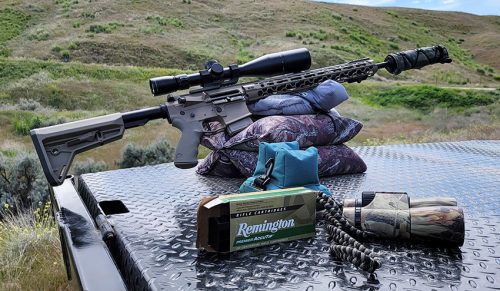
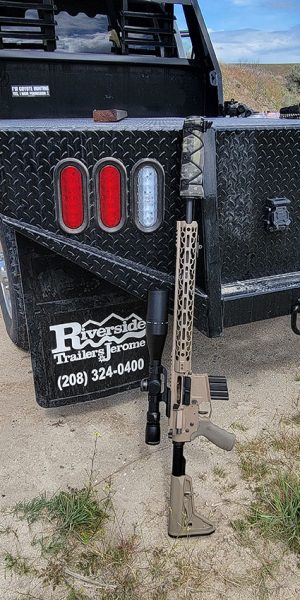
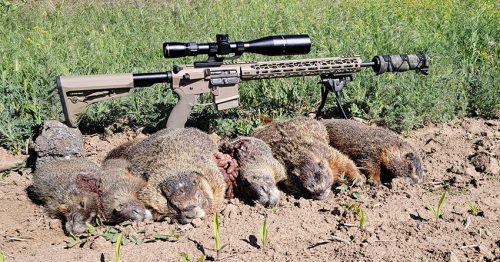
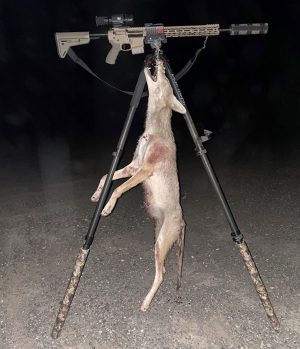
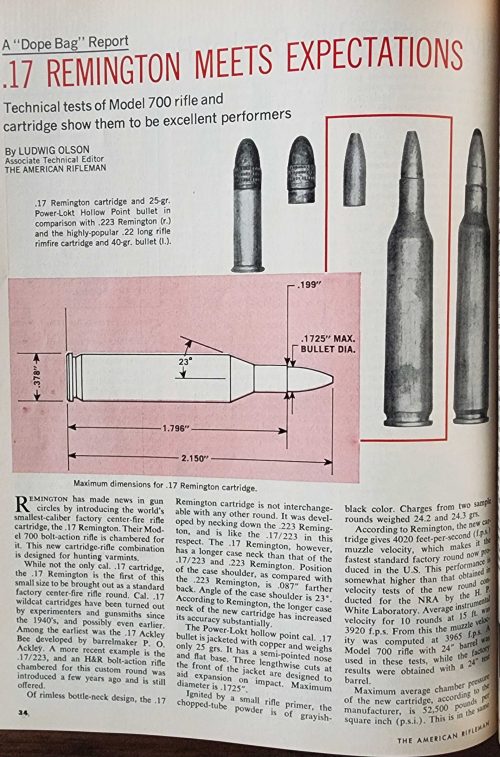
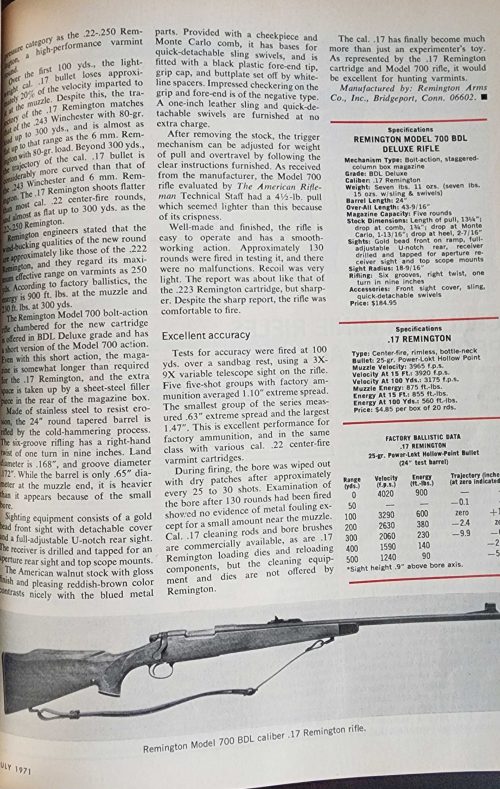
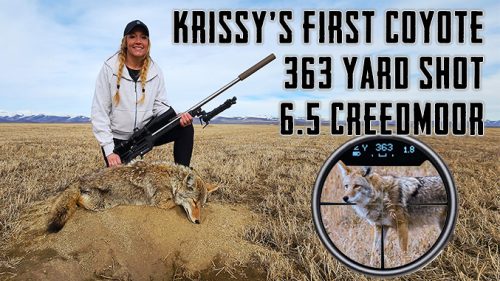
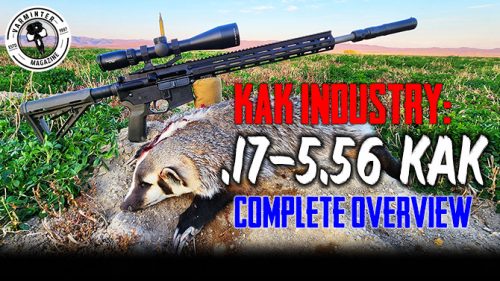
Leave a Reply
You must be logged in to post a comment